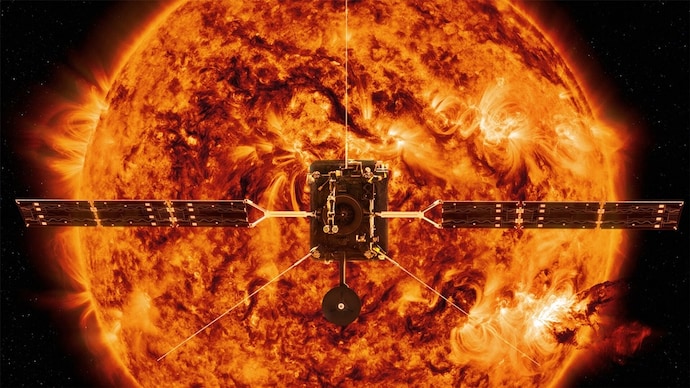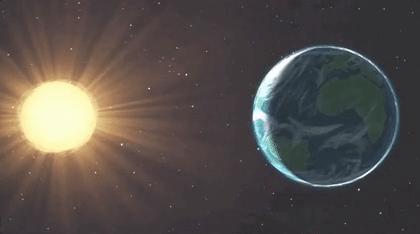Comett
Senior Member
- Joined
- Dec 16, 2022
- Messages
- 1,219
- Likes
- 6,810
PR guys went to sleepBut no tweet from ISRO
PR guys went to sleepBut no tweet from ISRO
Must be some issue with accessing their account. No tweets since yesterday on official ISRO handle.PR guys went to sleep
Quoted tweet below.
The Plasma Analyser Package for Aditya (PAPA) payload onboard the Aditya-L1 has been operational and performing nominally. Its advanced sensors have successfully detected the impact of coronal mass ejections (CMEs) including those that occurred during February 10-11, 2024.
PAPA is an energy and mass analyzer designed for in-situ measurements of solar wind electrons and ions in the low energy range. It has two sensors: the Solar Wind Electron Energy Probe (SWEEP, measuring electrons in the energy range of 10 eV to 3 keV) and the Solar Wind Ion Composition Analyser (SWICAR, measuring ions in the energy range of 10 eV to 25 keV and mass range of 1-60 amu). The sensors are also equipped to measure the direction of arrival of solar wind particles.
The payload has been operational since December 12, 2023. Its observations during the Halo Orbit Insertion (HOI) phase are shown in Figure 1. The figure illustrates the time series of SWEEP electron energy spectra and total count observed during the HOI phase and the period preceding and succeeding it. It reveals about three-order magnitude change in electron counts from 10 eV to 3000 eV. The majority of electrons have energy below 40 eV. It displays an excellent signal-to-noise ratio and energy resolution. Drastic reduction in the electron energy spectra and the total count occurs during the HOI phase due to the change in payload orientation away from the sun direction during this orbit maneuvering period. This is also evident in the ion energy spectra observed using SWICAR (Figure 2).
Figure 2 shows the time series of SWICAR ion energy spectra and integrated counts during the specified timeframe. It exhibits the expected patterns of ion energy spectra under normal space weather conditions. The ion energy spectrum indicates the dominance of protons (H+ @ 1 amu at around 800 eV) and alpha particles (He++ @ 2 amu at around 1600 eV). The ability of SWICAR to identify individual ion masses aligns with its design.
The electron (SWEEP) and ion (SWICAR) energy spectra observed before and after the HOI phase are comparable.
The data collected by PAPA revealed the occurrence of Coronal Mass Ejection (CME) events, notably on December 15, 2023, and during February 10-11, 2024, as shown in Figures 3 and 4. The CME on December 15, 2023, was a single event. PAPA observations during this period (Figure 3) showed an abrupt increase in total electron and ion counts and the time variations align with the solar wind parameters and magnetic field measurements obtained from the Deep Space Climate Observatory (DSCOVR) and Advanced Composition Explorer (ACE) satellites at the L1 point. In contrast, the observed variations in electron and ion counts during February 10-11, 2024 are the result of multiple minor events, with differences in the time variations of electrons and ions.
The SWEEP and SWICAR sensors on PAPA-Aditya-L1 are currently making continuous observations of solar wind electrons and ions in the default mode, demonstrating that they are performing as per the design in all modes of operations. The observations made by PAPA emphasize its effectiveness in monitoring space weather conditions and its capability to detect and analyze solar phenomena.
The PAPA payload is developed by the Space Physics Laboratory and Avionics Entity of the Vikram Sarabhai Space Centre (VSSC)/ISRO.

India's maiden solar probe, Aditya L1, will track the Sun as it gets cloaked by the moon, creating a brief period of darkness in several parts of North America, during the Total Solar Eclipse.
The Total Solar Eclipse will occur on April 8 as the Sun, Moon and Earth align in a straight line leading to darkness during the daytime. The cloaking will create a period of totality expected to last over four minutes, illuminating the enigmatic outer layer of the Sun that is not visible from Earth.
The Adiya L1 mission has six instruments as it observes the Sun from Lagrange Point 1, nearly 15 kilometres from Earth. Of the six, two instruments could be primed to observe the Sun during the eclipse. These are the Visible Emission Line Coronagraph (VELC) and the Solar Ultraviolet Imaging Telescope (SUIT).

The coronagraph studies the Sun's outer layer, the corona, by blocking the Sun's disk and creating an artificial eclipse onboard the spacecraft. Meanwhile, the Suit images the Solar Photosphere and Chromosphere in near ultraviolet.
During the eclipse, the Sun's corona is visible as the Moon blocks the solar disk and reveals the outer bright layers shining, and can be seen from Earth for a brief moment. The corona is not visible, otherwise, from the planet.
"The eclipse presents a rare opportunity to observe the Sun from both space and on Earth and then go on to get a comprehensive picture by cross-relating the observations at a later stage. We would be planning to observe the Sun with Aditya L1's Suit instrument," Professor Durgesh Tripathi, Principal Investigator of Aditya L1's Suit instrument at the Inter-University Centre for Astronomy and Astrophysics (IUCAA) told inditoday.in.

The Aditya L1 spacecraft entered its halo orbit at Lagrange Point 1 earlier this year after leaving Earth in 2023. The spacecraft is being calibrated in the coldness of space at L1 and has begun science observations.
The Plasma Analyser Package for Aditya (Papa) payload onboard the Aditya-L1 detected the first solar wind impact of Coronal Mass Ejections in February. Meanwhile, the 6-meter-long magnetometer boom was deployed in January.
The Aditya-L1 mission aims to deepen our understanding of solar phenomena, including the solar corona, photosphere, and the impact of solar winds and related radiation. The spacecraft's instruments have been calibrated during its voyage, sending back X-ray images and particle counts, showcasing its healthy condition.

Aditya L1 will not be the only spacecraft to be looking at the Sun during the rare eclipse, Europe's Solar Orbiter, which conducted its closest approach to the Sun on April 4, will also have its instruments activated.
Solar Orbiter will be observing the Sun side-on compared to our perspective on Earth. This means that the structures in the corona (the Sun’s outer atmosphere) that we see on the right-hand side of the Sun from Earth will be seen directly face-on by the spacecraft.
The eclipse offers a rare opportunity for astronomers across the world to observe the Sun and conduct tag-team observations with ground-based observatories and space-based probes to better understand the physics powering the Sun.
